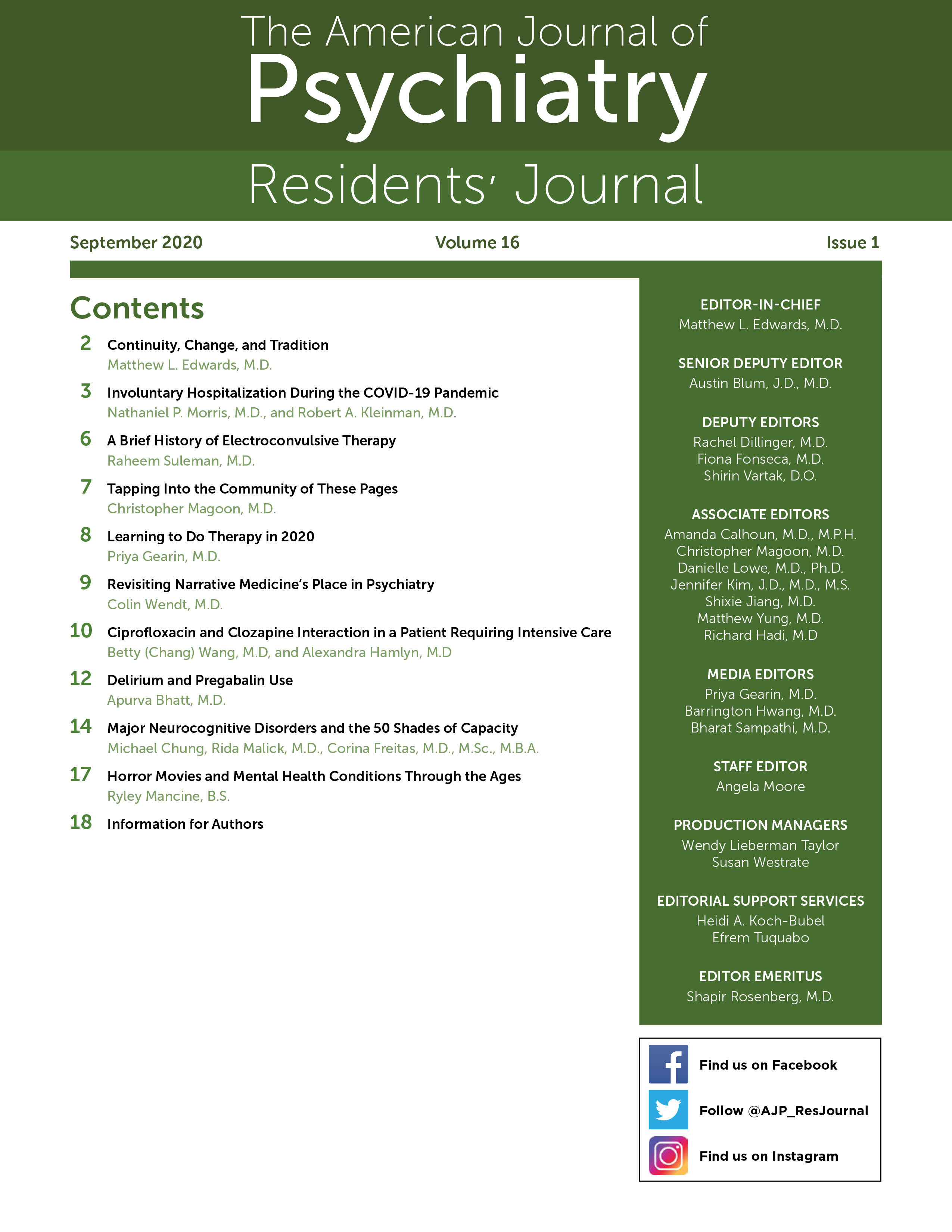A Brief History of Electroconvulsive Therapy
Few treatments used in psychiatry have as rich a past as that of electroconvulsive therapy (ECT). The discovery of ECT garnered much interest at a time when there were few effective interventions for psychotic disorders. Researchers continue to investigate ECT and related therapeutics; revisiting the history of ECT may help shed light on the origins of the field of neuromodulation.
The roots of ECT lie in the concept of using one disease to treat another, which was spurred by the discovery of malarial therapy for neurosyphilis. In 1934, Ladislas J. Meduna (1896–1964) observed greater microglia concentrations on pathologic brain sections from patients with epilepsy, compared with patients with schizophrenia, and theorized that seizures could be used to treat psychiatric disease. He intramuscularly injected camphor, an epileptogenic agent, into a mute catatonic patient and induced a generalized tonic-clonic seizure. Although there was no immediate effect, the patient rapidly improved after four more treatments. He was soon able to walk, speak, and feed himself, although he was unable to recall most of his 4-year hospital stay (1).
Meduna’s technique was effective but inefficient—seizures took minutes to begin after the epileptogenic agent was injected, during which time patients suffered from sympathetic overdrive and a profound sense of terror (2). A team of Italian physicians led by Ugo Cerletti (1877–1963) and Lucio Bini (1908–1964) sought to derive a method of electrical seizure induction with a quicker onset and fewer side effects and began by testing their technique in dogs. They inserted one electrode in the mouth and another in the anus, but after observing that this tended to induce cardiac arrest, they refined their procedure to focus the electrical current cranially. In 1938, they conducted their first human trial on a 39-year-old disorganized man with schizophrenia who had been found wandering at a train station in Rome. With the application of 110 volts of alternating current for 0.2 seconds, they successfully induced a seizure (3). They administered ten more treatments over the course of the patient’s hospitalization and successfully attenuated his psychosis, such that he was able to return to his wife and job in the community.
A method of safe and effective treatment represented a tremendous breakthrough for a field whose sluggish progress once prompted Cerletti to call it a "funereal science." News about the technique rapidly spread throughout Europe and North America, where ECT was first employed in 1940. It soon proved to be effective for a variety of neurological and psychiatric conditions, including major depression, and was even studied for the treatment of psoriasis and gastroduodenal ulcers (4). Since those early days, continual refinements to the ECT protocol have resulted in the practice more recognizable to modern psychiatry. In 1944, Wladimir T. Liberson (1904–1994) shortened the stimulus duration, which resulted in a reduction in postprocedure aphasia, cognitive blunting, and recovery time (5). In 1952, Holmberg and Thesleff pioneered "modified" (anesthetized) ECT, which further improved patient comfort and tolerability (6).
Today, research in the field of neuromodulation continues. Newer approaches, such as repetitive transcranial magnetic stimulation, show promise in extending many of the benefits of ECT with a potentially lower side-effect burden (7). More than eight decades after its discovery, ECT itself also continues to be of benefit in the treatment of severe and refractory affective and psychotic disorders.
1. : Autobiography of L J Meduna. Convuls Ther 1985; 1:43–57 Google Scholar
2. : Induced seizures as psychiatric therapy. J ECT 2004; 20:133–136 Crossref, Google Scholar
3. : Convulsive therapy: a review of the first 55 years. J Affect Disord 2001; 63:1–15 Crossref, Google Scholar
4. : The origins of electroconvulsive therapy (ECT). Convuls Ther 1988; 4:5–23 Google Scholar
5. : Brief stimulus therapy. Am J Psychiatry 1948; 105:28–39 Link, Google Scholar
6. : Succinyl-choline-iodide as a muscular relaxant in electroshock therapy. Am J Psychiatry 1952; 108:842–846 Link, Google Scholar
7. : An update on repetitive transcranial magnetic stimulation for the treatment of major depressive disorder. Clin Pharmacol Ther 2019; 106:747–762 Crossref, Google Scholar



